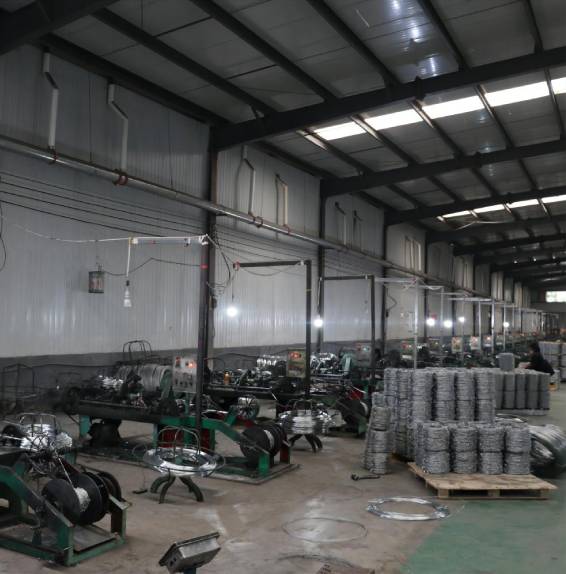Choosing Galvanized Nails for Long-lasting Pressure Treated Wood Projects and Construction
Understanding Galvanized Nails for Pressure-Treated Wood
When it comes to building projects involving pressure-treated wood, one of the most critical considerations is the selection of the right fasteners. Notably, galvanized nails have become a popular choice among builders and DIY enthusiasts. This article explores the reasons behind the use of galvanized nails with pressure-treated wood, examines their benefits, and provides practical tips for selection and usage.
What is Pressure-Treated Wood?
Pressure-treated wood is timber that has been infused with preservatives to help resist rot, decay, and insect damage. This process involves placing the wood in a pressure chamber where preservatives are forced deep into the wood fibers. Common uses for pressure-treated wood include decks, fences, and outdoor furniture due to its durability and longevity. However, this wood contains chemicals like copper and other agents that can corrode certain metals, making the choice of fasteners especially important.
Why Choose Galvanized Nails?
Galvanized nails are coated with a layer of zinc, which provides a protective barrier against rust and corrosion. This feature makes them particularly suitable for use with pressure-treated wood. Since the preservatives used in pressure-treated wood can be corrosive, using non-galvanized nails or certain metals can quickly lead to structural issues as fasteners deteriorate.
1. Corrosion Resistance The main reason to use galvanized nails for pressure-treated wood is their resistance to corrosion. Regular steel nails would rust and weaken over time when exposed to the chemicals in pressure-treated wood, compromising both the integrity of the nail and the overall project.
2. Durability Galvanized nails are known for their strength and durability. They can withstand heavy loads and resist bending or breaking, making them ideal for outdoor structures that bear weight over time.
3. Cost-Effectiveness Although galvanized nails might cost more upfront compared to regular nails, their longevity and reduced need for repairs mean that they can be a more cost-effective option in the long run.
Types of Galvanized Nails
galvanized nails for pressure treated wood

There are two primary types of galvanized nails hot-dipped galvanized and electro-galvanized.
- Hot-Dipped Galvanized Nails These nails are dipped in molten zinc, which creates a thick, robust coating. This makes them suitable for exposure to harsher conditions, such as in outdoor constructions or areas with high moisture. The thicker coating provides enhanced protection against corrosion.
- Electro-Galvanized Nails These nails are coated with zinc using an electroplating process. While they have a smoother finish and are generally less expensive, their coating is thinner and may not offer the same level of corrosion resistance as hot-dipped galvanized nails. They are better suited for indoor applications or situations with minimal exposure to moisture.
Practical Tips for Using Galvanized Nails
1. Choose the Right Type Depending on the project, consider whether hot-dipped or electro-galvanized nails are more appropriate. For outdoor projects, hot-dipped is usually preferred.
2. Select the Right Size Ensure that the nails are of an appropriate length and thickness for the wood being used. Generally, nails should be at least twice the thickness of the material being fastened.
3. Avoid Overdriving When installing nails, avoid overdriving them as this can damage both the nail and the wood. Using a nail gun with an appropriate depth setting can help prevent this issue.
4. Storage Keep galvanized nails in a dry environment to avoid any potential rusting before use. Humidity can lead to moisture build-up on the nails that could compromise their protective coating.
Conclusion
Using galvanized nails for pressure-treated wood is an essential practice for ensuring the longevity and sturdiness of outdoor constructions. Their resistance to corrosion, strength, and overall durability make them the ideal choice for projects exposed to the elements. By selecting the right type of galvanized nails and employing proper installation techniques, builders can create safe and lasting structures that withstand the test of time. Whether you are a seasoned contractor or a weekend warrior, understanding the significance of the right fasteners can lead to successful and enduring projects.
-
Innovations in Razor Barbed Wire Design TechnologyNewsAug.11,2025
-
Roofing Nail Compatibility with Different Metal Roof TypesNewsAug.11,2025
-
Welded Wire Mesh for Rockfall Protection BarriersNewsAug.11,2025
-
Galvanized Wire Corrosion Resistance TestingNewsAug.11,2025
-
3D Fence Solutions Preventing Bird CollisionsNewsAug.11,2025
-
Using Chain Link Fence for Urban Garden SupportNewsAug.11,2025




